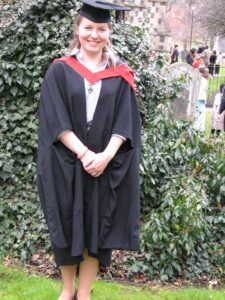Advanced Integrative Therapy
an approach developed by Asha Clinton a Jungian psychotherapist.
The main presupposition of AIT is that in order to free oneself from undesired and reoccurring problems (such as: repetitive difficulties, unsuccessful relationships, unhealthy habits, accidents, psychosomatic illnesses to name a few) we need to first process emotions associated with distressing experiences from which those difficulties stemmed from.

As a cut, in which there still is a chip of glass, does not heal properly, in the same way an unprocessed emotional pain caused by a traumatic/distressing/upsetting event cannot heal. The bit of glass in our flesh may somehow be “accepted” by the body, but the scar will be sensitive to the touch because, at the end of the day, we still have glass stuck in our flesh…The same applies to our emotional scar – the mind will deal the best way it can to “adapt” to the emotional shard of glass in it, but we will become affected by it.
Using this modality can be compared to removing the piece of glass from the wound. It leaves body and mind free to utilise their natural healing abilities and coping mechanism to heal. With obstacles out of the way we can finally move forward. The process led by a therapist is easy to follow and with practice can be used independently as a self-help method (although it is recommended that an experienced practitioner gives us detailed instructions).
MORE ABOUT AIT (a few minutes read)

Let me give you an example: it is a common knowledge that, for instance, those who experienced a car accident might be feeling highly and uncontrollably distressed when passing by the spot where it happened. Others might not be able to drive after the car accident at all. Anxiety, fear and other emotions they experienced during the accident would be triggered every time they get into a car. Those are involuntary physical and emotional reactions to an unprocessed trauma. It seems as if traumatic memories become trapped in our nervous system and kept throughout our bodies.
Typically we attempt to deal with such reactions through rationalising them (talking, finding answers to “why”). It often gets us to the point where we can say: “Yes, I know I should be feeling better now” or “I know I should not blame myself” or “I know I should feel safe again” BUT “ I don’t…”.
Tools of this approach are used to help us truly FEEL better not only “know that we should feel better”.
Let me give you an example from my own experience:
My first hand encounter with AIT was in 2009.
I was working in a child and adolescent service in the UK, whilst also completing my training as a systemic family therapist. I was preparing for my final oral exam (viva) – or I should say I was attempting to, but mostly, I procrastinated. I had this old belief that I simply could not do well at oral exams. In addition my year three mock viva had been a disaster. I had barely passed. The experience left me humiliated and scared for my future. ‘How am I going to get through this real exam if I did so badly at the rehearsal?’

I confided in a colleague of mine. I knew that she was practising a trauma treatment models. She explained the main presuppositions of AIT as I have given you above.
I was desperate to bring some relief to my anguish so I welcomed her offer to show me how AIT actually worked.
Then my colleague led the whole AIT process for me.
After the treatment my previous belief that “I have to fail now because I used to fial in the past”, sounded really ridiculous. I could feel this strong conviction that I am going to be all right during my exam – all the resources and positive beliefs about myself came to the surface. It was evident, heart fell feeling that I am more than capable of doing my viva presentation.
My conviction in that moment proved correct. I took my viva exam, and I got A mark for it.
If you want to introduce change in your life, book your first consultation – send us an email: ![]()
![]()
